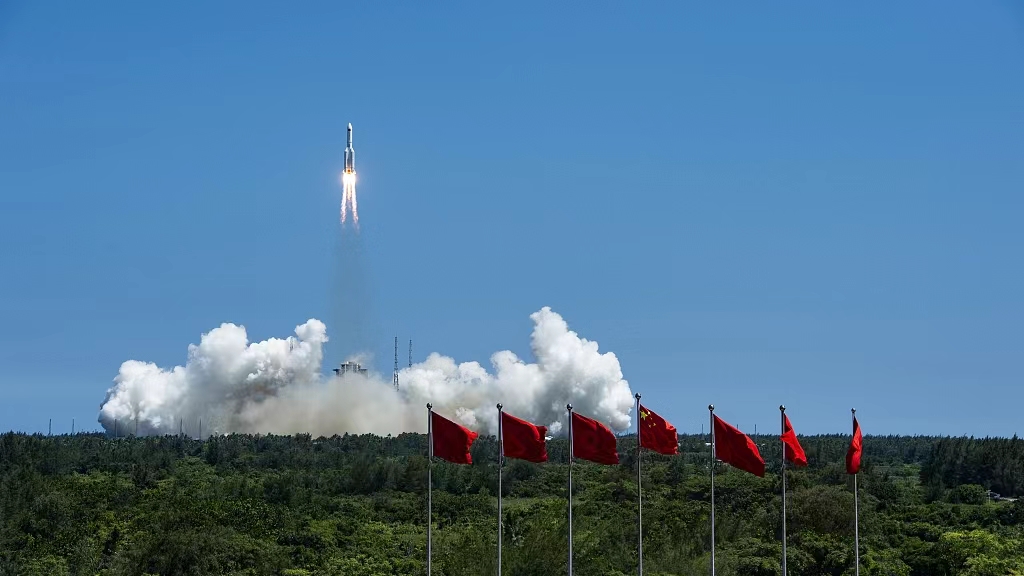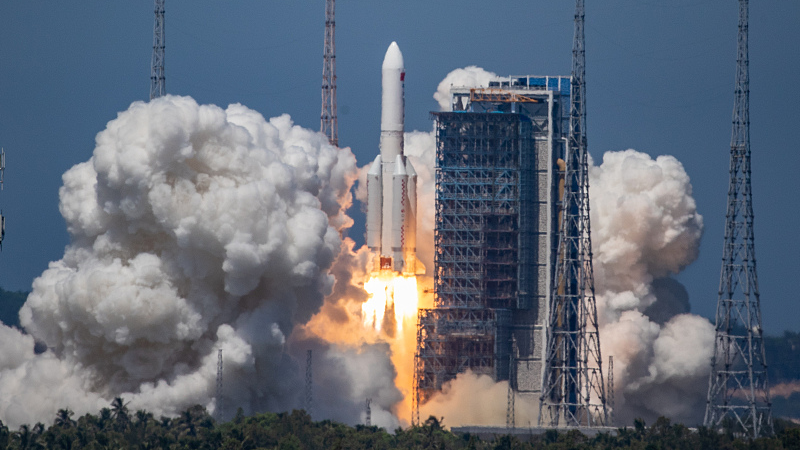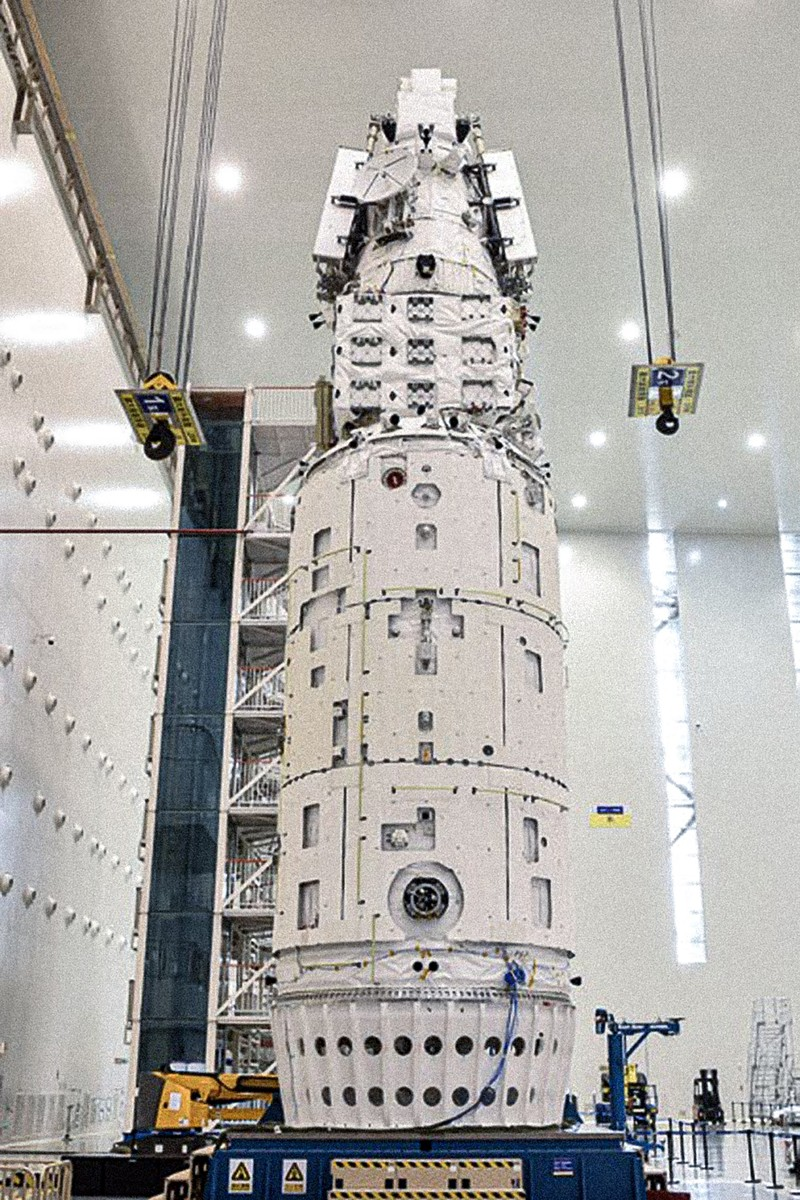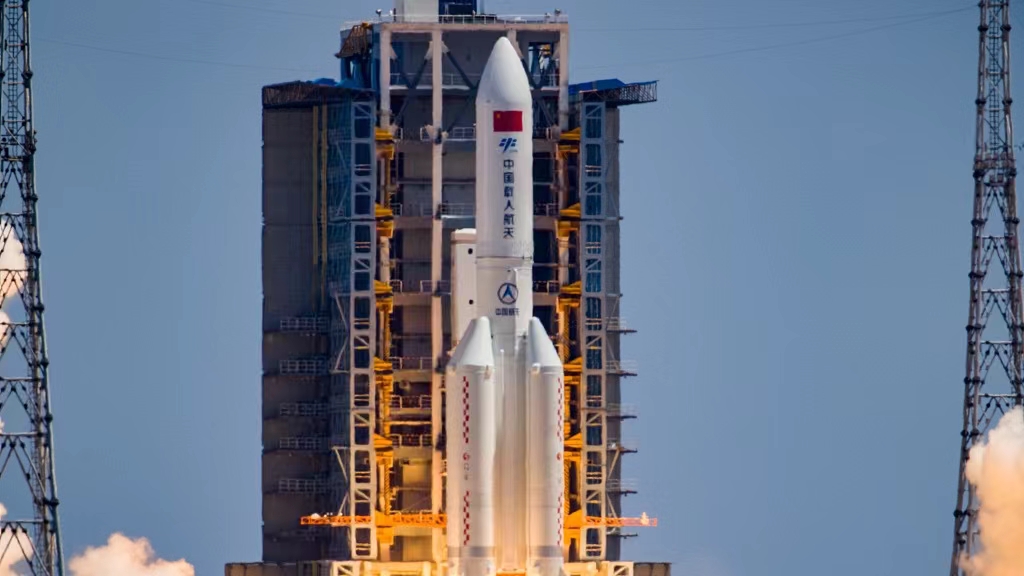02:11

China blasted off its record-breaking spacecraft Wentian lab module into orbit on Sunday afternoon, the largest and heaviest the country ever sent off to its space station complex that's under construction.
This is the first lab module China launched to the space station, a key component for the station's assembly.

Wentian lab module blasts off from the Wenchang Spacecraft Launch Site in Hainan Province, July 24, 2022. /CFP
Wentian lab module blasts off from the Wenchang Spacecraft Launch Site in Hainan Province, July 24, 2022. /CFP
Weighing 23 tonnes, the Wentian lab module is 17.9 meters long with a diameter of 4.2 meters. It consists of three parts: a work cabin, an airlock cabin and a resource cabin. Compared with the Tianhe core module, which is already operating, Wentian is larger and heavier, outcompeting the core module in power supply and information transmission.
The country used the Long March 5B carrier rocket – China's most powerful rocket for low-Earth orbit missions – to blast off the massive spacecraft.
The rocket took off at 2:22 p.m. Beijing Time on July 24 from the Wenchang Spacecraft Launch Site on the coast of the southern island province of Hainan. About 495 seconds later, Wentian separated from the rocket and entered the planned orbit. According to the China Manned Space Agency (CMS), the launch was a complete success.
Read More: China's most powerful rocket readies for mega payload mission to space station
01:28

Landmark tasks for Wentian
In this mission, Wentian will conduct several landmark tasks for the first time.
"We will move around the space module in orbit for the first time," Wei Bangyou, who works for the China Space Station General System of China Academy of Space Technology (CAST), told CGTN. "Also, for the first time, our small robotic arm will be used for supporting taikonauts' spacewalk. Previously the taikonauts had used the big robotic arm."
In addition, the taikonauts will be venturing out for spacewalks through Wentian's airlock cabin for the first time, according to Wei. The airlock cabin will be used as the main exit-entry point for extravehicular activities when the station is completed.
The small robotic arm Wentian is equipped with can carry three tonnes of payload as the expert said it can operate more precisely than the big one the station already has.
"The small arm carries less than the big arm, but its strength lies in its high accuracy position control," Wei said. "It can grab even very small experiment payload precisely where it's needed."
He said the big and small robotic arms could work together and form a unit and then move around the space station's surface. "The designed operating range of the robotic arms can cover the entire surface of the space station. You can think of it as a stethoscope that conducts routine checks [of the space station] anywhere."

The Wentian lab module. /Xinhua
The Wentian lab module. /Xinhua
Multitasking in space
The Wentian lab module has living facilities for the taikonauts just like the core module, the combination of which can serve as many as six taikonauts from two spacecraft during rotation. It has three sleeping areas, a toilet and a kitchen.
The Wentian lab module can work as a backup for the core module. It can control the entire space station with all the key functions the core module has, providing extra insurance for the station. "Before, there was only the core module with the cargo ship and the manned spaceship. But with Wentian there, there are two modules operating for the space station. Wentian has functions like energy management, information management, manned environment control and overall altitude and orbit control. So in case of danger, we have two sets of safety insurances from Wentian and Tianhe," said Li Wei, deputy chief designer of the China Space Station General System at CAST.
And its capability doesn't stop there. Li said Wentian is "many things in one." He said aside from controlling the station, Wentian is "capable of large-scale space experiments, both in and outside of Wentian's sealed cabin, and on a greater scale than ever."
Wentian can also perform a fast rendezvous and docking procedure, the same as what previously manned spaceships or cargo craft did, Li added.
01:20

Operating for experiments
The cabin Wentian is mainly for studies on space life sciences. It is equipped with scientific cabinets that can support experiments on life and ecology, biotechnology, as well as comparative studies of biological growth mechanisms under varying gravity conditions.
The experiment cabinets can be used to study the growth, development, heredity and aging of plants, animals and microorganisms in space, as well as the research on closed ecosystems. Multi-level biological experiments on molecules, cells, tissues and organs can be conducted.
The crew members will give science classes from the Wentian lab module for the first time.
Besides Wentian, the other experiment module Mengtian is expected to be launched in October to dock with Tianhe, forming a T-shaped structure.
Read More: China launches Wentian lab module to its space station

